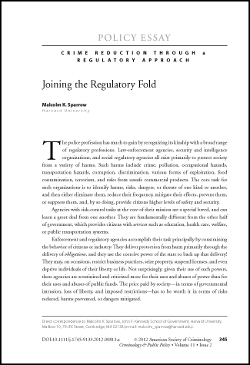
Crime reduction policy has focused almost exclusively on offenders. Recent studies and evaluations show that expanding our policy portfolio to include places may be highly productive. We show that there is considerable research showing that crime is concentrated at a relatively few locations, that high-crime places are stable, that changing places can reduce crime, that displacement is not only far from inevitable but also less likely than the diffusion of crime prevention benefits, and that owners of high-crime places can be held accountable for the criminogenic conditions of their locations. We link these findings to environmental policy, where environmental scientists, economists, and regulators have developed a broad set of regulatory options. The core of this article describes a portfolio of environmental policy instruments directly applicable to crime places. We also discuss major decisions local governments will need to make to implement various forms of regulation, and we list challenges that governments must anticipate in planning for such implementation. We argue that a regulatory approach to crime places has the potential to lower the cost to taxpayers of reducing crime by shifting costs from governments to the relatively few place owners whose actions create crime-facilitating conditions.
